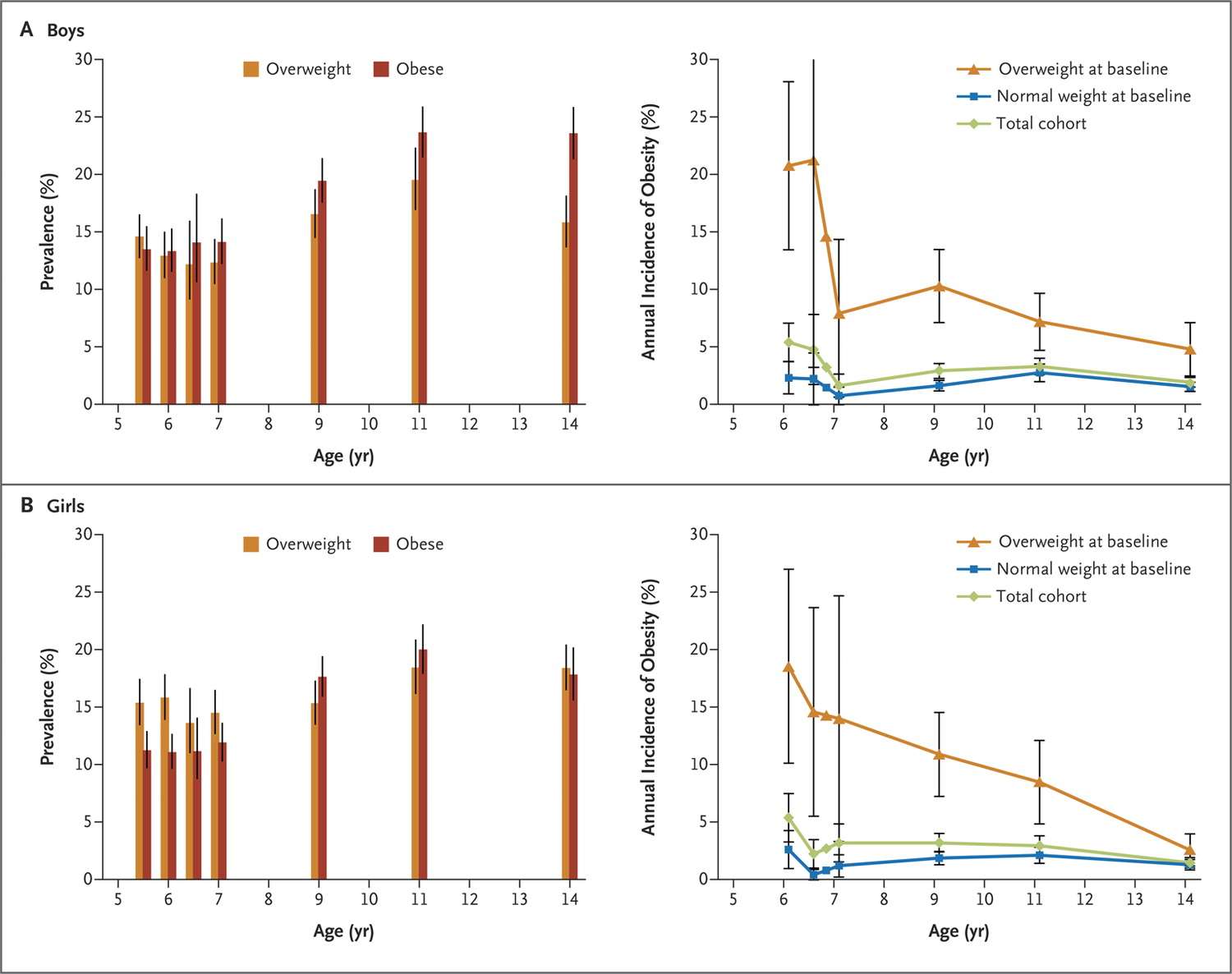Background
The global increase in childhood overweight and obesity that can have both long-term and short-term health outcomes (Colquitt et al., 2016).
14.9% children aged five years and a half are overweight (Cunningham, Kramer, & Narayan, 2014).
Preschool age is crucial for lifestyle interventions comprising habits of regular physical activity and healthy eating (Ling, Robbins, & Wen, 2016).
The prevalence of obesity among children from kindergarten to the eighth grade is increasing (see Figure 1). Thus, it is necessary to address this issue in early childhood to avoid weight-related health problems in adolescence and adulthood.
There is a necessity to discover efficient methods to treat the problem of childhood obesity.

Problem Statement
The issue of childhood obesity is a burden on society and demands complex interventions.
Purpose of the Project
To evaluate the impacts of diet, physical activity, and behavioral interventions on the overweight and obesity treatment in preschool children younger than 6 years old.
Research Question
“How effective are diet, physical activity, and behavioral interventions in reducing the weight of overweight and obese preschool children?” (Colquitt et al., 2016, p. 5).
Hypothesis
Healthy diet, physical activity, and changes in behavior can positively influence the reduction of rates of overweight and obese preschool children.
Methodology
- Qualitative research
- Systematic literature search in databases
- Analysis of seven randomized control trials.
- Participants are obese or overweight children from 0 to 6.
Results
In all the studies the body mass index (BMI) is the indicator of overweight and obesity.
For children, it is important to consider gender, weight, and height for BMI calculation. Moreover, the treatment of the results of calculations depends on age and changes as a child grows older.
The trials under analysis reported changes in BMI of groups of children that were involved in the planned interventions.
Five trials out of six also reported changes in body mass.
Three trials revealed alterations in parental weight or BMI.
Secondary outcomes of trials include positive changes in health-related quality of life.
Steps in Implementing the Project
Implications for practice: multicomponent interventions are efficient for the treatment of obese and overweight preschool children. Still, their use is at risk of bias due to the lack of evidence of their implementation and absence of adverse effects measurements.
Implications for further research: the results of the analyzed trials contribute to further investigation of the results of multicomponent interventions in general and their adverse effects in particular.
Limitations
Since the trials were divided into two groups, those with dietary interventions and multicomponent interventions, it can be difficult to generalize the results of their comparison and conclude which ones are more efficient for preschool children.
Conclusion
The authors conclude that multicomponent interventions can be an efficient tool for treating overweight and obese preschool children. Still, there is not enough evidence to support their application, and most of the trials are under the threat of bias. Moreover, the existing trials do not investigate the possible adverse events of such interventions. Thus, this aspect of multicomponent interventions to manage overweight and obesity among children need further research. On the whole, both multicomponent and dietary interventions proved to have an effect on the BMI and thus can be used to treat overweight and obesity among preschool children aged from 0 to 6 with all necessary safety considerations.
References
Colquitt, J., Loveman, E., O’Malley, C., Azevedo, L., Mead, E., Al-Khudairy, L. … Rees, K. (2016). Diet, physical activity, and behavioural interventions for the treatment of overweight or obesity in preschool children up to the age of 6 years. Cochrane Database of Systematic Reviews, 3, 1-123. Web.
Cunningham, S., Kramer, M., & Narayan, K. (2014). Incidence of childhood obesity in the United States. New England Journal of Medicine, 370(5), 403-411. Web.
Ling, J., Robbins, L., & Wen, F. (2016). Interventions to prevent and manage overweight or obesity in preschool children: A systematic review. International Journal of Nursing Studies, 53, 270-289. Web.
